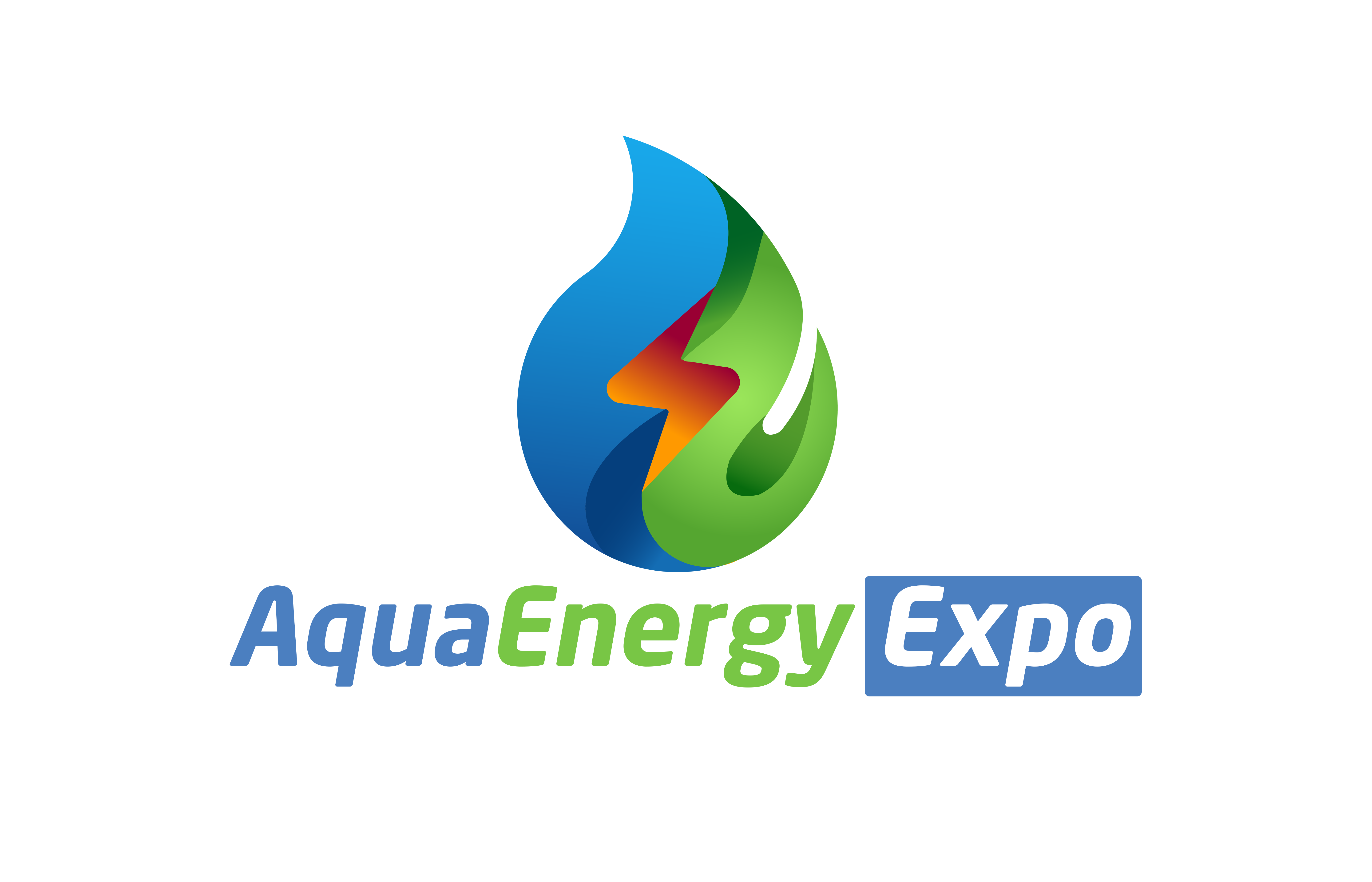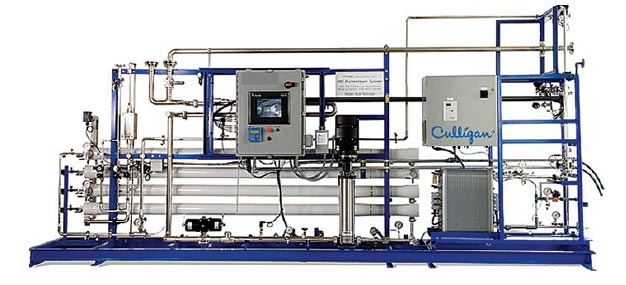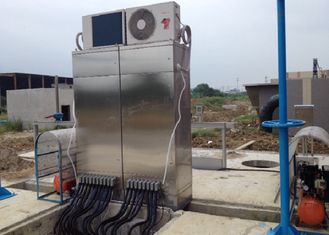Introduction
Disinfection is the selective destruction of pathogenic organisms; sterilization is the complete destruction of all microorganisms. Disinfection may be considered as one of the most important processes in water and wastewater treatment. This practice used in water and wastewater treatment has resulted in the virtual disappearance of waterborne diseases.
Disinfection may be accomplished through the use of chemical agents, physical agents, mechanical means, and radiation. In wastewater treatment, the most commonly used disinfectant is chlorine; however, other halogens, ozone, and ultraviolet radiation,and organic disinfectants have been used.
- Recent Environmental Concerns and Regulations
Protection of public water supplies relies heavily on the use of disinfectants. Disinfectants are used to maintain a residual in the distribution system to prevent any health problems and to maintain the water quality standards. Since the new regulation requirements, the water industry has been looking for alternative chemicals or techniques to replace chlorine. In this section, instead of studying halogenation technology, we present techniques to reduce halogenation by-products. Different techniques include (a) chlorine dioxide, (b) chloramines, (c) coagulant, (d) ozonation, (e) organic disinfectants, and (f) ultraviolet light [1–2,3–4,5–6]. To comply with the upcoming stringent law, the techniques were tested by different plants. In the past, we have used chlorine to disinfect the finished drinking water, but then it may produce trihalomethanes (THMs) and other products. These can be potential carcinogens. This includes most of the halogens, especially the chlorine [7].
Chlorine is a major halogen used in water treatment for controlling microbial quality. Marhaba [8].described the US Environmental Protection Agency (US EPA) initiated and negotiated the rule-making process for the Disinfectant/Disinfections By Products (D/DBPs) Rule in 1992. Owing to the complexity of the problems, US EPAhad to draw on the expertise of others to prepare the rule. The regulation was proposed in two steps.
Stage 1 of the D/DBPs Rule was proposed in 1994 and became effective in December 1998. It lowered the total THM (TTHM) maximum contaminant level (MCL) from 0.100 to 0.0800 mg/L and three other classes of DBPs. The rule also set maximum residual disinfectant levels (MRDL) for three disinfectants. To provide necessary data for stage 2 of the D/DBP regulations, the Information Collection Rule (ICR) (begun July 1, 1997, ended December 1998) was proposed in 1994 with stage 1 of the D/DBP Rule. Stage 2 was re-proposed in 2000 and required even lower MCLs for DBPs than those proposed in stage 1. The 1996 Amendments to the Safe Drinking Water Act (SDWA) require US EPAto promulgate the stage 2 Rule by May 2002. Stage 1, proposed in 1994 and promulgated in 1999, provided maximum contaminant levels (MCLs) for the sum of five haloacetic acids (HAAs) at 0.6 mg/L, BrO3 − at 0.010 mg/L, and brominates trihalomethane (THMs) at 0.08 mg/L. Stage 2 MCLs of 0.040 mg/L for TTHMs and 0.020 mg/L for HAAs were proposed. Table 1 gives a summary of the proposals according to the affected parameters.
Table 1 Proposed Disinfectant Level on Disinfectant Residuals and DBPs
| Parameter | Effective Stage 1 (mg/L) | Anticipated Stage 2 (mg/L) |
| MRDL for chlorine | 4.0 | 4.0 |
| MRDL for chloramines | 4.0 | 4.0 |
| MRDL for chlorine dioxide | 0.8 | 0.8 |
| MCL for TTHM | 0.08 | 0.04 |
| MCL for five haloacetic acids (HAAs) | 0.06 | 0.02 |
| MCL for bromate ion | 0.01 | |
| MCL for chlorite ion | 1.0 |
- Chlorine Dioxide
Chlorine dioxide is widely used as an alternative to chlorine for treating drinking water . Numerous chlorine dioxide generation technologies have recently been developed to improve the conversion efficiency and purity of chlorine dioxide [9]. Water utilities use chlorine dioxide for peroxidation, control of taste and odor problems, and inactivation of common pathogens. Because chlorine dioxide is an oxidizing agent that does not chlorinate, it is often used for lower THM concentrations in finished water to meet levels established by the US EPA.
- Chloramines
Owing to the D/DBP rule, many water utilities may be switching from chlorine to alternative disinfectants. Chloramines have become the disinfectant of choice to replace free chlorine in distribution systems because they produce fewer DBPs while controlling the re-growth of bacteria. Controlling nitrification is essential if chloramines are to be a viable alternative disinfectant scheme for distribution systems in all types of environments.
El-Shafy and Grunwald [10]. studied the formation of THMs and its species from the reaction of chlorine with humic acid substances. This has caused much attention because of their carcinogenic and dangerous health effects. They found residual chlorine in water entering the distribution pipelines was on average 0.75 mg/L and decreased with distance until it reaches zero. The low velocity and large volume of reservoirs increased the residence time and correspondingly provided conditions for more chlorine decay and accordingly an increase in THM formation. The residence time and decay of chlorine were used as good predictors for the formation of THM and Chloroform in this study.
- Coagulant
The evaluation of 16 sites, with optimized coagulation provide an assessment of the technique and illustrate its capabilities to meet the requirements of Disinfectants/Disinfections by-product rule (D/DBP), were done by Bell-Ajy et al. [11] .
Jar tests were used to determine the effectiveness of optimized coagulation for the removal of organic carbon, DBP precursors, particles, and turbidity when supernatant results were compared with conventional treatment. Jar-test results indicated that optimized coagulation could enhance the removal of organic carbon and DBP precursors.
- Ozone
Ozonation is one of the alternative techniques to replace traditional chlorine . Although the use of ozone will not produce chlorinated THM, haloacetic acids or other chlorinated by products, it will react with nature organic material. Ozone and its primary reactive product, the hydroxyl free radial (OH−), are strong oxidizers.
The oxidation by-products typically include aldehydes, aldo and keto acids, carboxylic acids, and peroxide. Grosvener [12] presented a paper providing a detailed summary of ozonation and by-product formation chemistry, effective approaches toward the control of by-product formation, and DBP precursor removal technologies. Natural organic materials (NOM), a major component of total organic materials, is a complex matrix of total organic chemicals that can be derived from partial bacterial degradation of soil, living organisms, and plant detritus.
- Organic Disinfectants
Wang [13] has studied the use of various organic disinfectants for water purification, swimming pool water disinfection, and sludge disinfection. The major advantage of using organic disinfectants is that organic disinfectant will not be consumed easily by the target influent water, wastewater, or sludge containing organics.
- Ultraviolet (UV)
Hartz [14] described the pilot study at Midway Sewer District, located south of Seattle, WA. Owing to new regulation requirements, the district commissioned an investigation of alternative methods of disinfection, a pilot study to determine the effectiveness of ultraviolet irradiation. The UV process involved subjecting the wastewater to light energy in which lamps are tuned to emit certain light frequencies . In the case of UV used for microorganism inactivation, the lamps are tuned to a specific emission wavelength, for low-pressure lamps, the frequency most effective for inactivation around 250 nm. A number of variables regarding the effectiveness of the UV systems included: (a) light intensity, (b) residence time, and (c) effluent requirements. The results were that the percentage of light transmission for this pilot trial was slightly lower than normal. It was indicated that trickling filter tended to produce a wastewater that has a lower percentage light transmission. Then, owing to the solid content contact unit following the trickling filter system, the residual turbidity is lowered and the light transmittance is slightly increased. The UV light transmission was about 62% for an unfiltered sample of the wastewater. Filtration of the wastewater sample improved the light transmission by 5%. The district has found this technique as a possible alternative.
By
Ahmed Ahmed Elserwy
Water & Environmental Consultant
Ain Shames University, Faculty of Science
References
[1]. T. Governor, Water Engineering Management, February, 30–33 (1999).
[2].. W. Sung, B. Reilley-Matthews, D. K. O’Day, and K. Horrigan, JAWWA, 92, 53–63 (2000).
[3].. L. K. Wang, J. New England Water Works Association, 89, 250–270 (1975).
[4].. L. K. Wang, Water and Sewage Works, 125, 99–104, (1978).
[5].. L. K. Wang, Y. T. Hung and N. K. Shammas (eds.), Physicochemical Treatment Processes.
Humana Press, Totawa, NJ. 2004.
[6].. L. K. Wang, N. K. Shammas and Y. T. Hung (eds.), Advanced Physicochemical Treatment
Processes. Humana Press, Totawa, NJ. 2005
[7]. M. Krofta and L. K. Wang, Removal of Trihalomethane Precursors and Coliform Bacteria by Lenox Flotation-Filtration Plant, Water Quality and Public Health Conference, US Department of Commerce, National Technical Information Service, Springfield, VA, Technical Report PB83-244053, 1983, pp. 17–29.
[8]. T. F. Marhaba, Water Engineering Management, January, 30–34 (2000).
[9] G. Gorden, JAWWA 91, 163–174 (1999).
[10] M. A. El-Shafy and A. Grunwald, Water Research 34, 3453–3459 (2000).
[11] K. Bell-Ajy, E. Mortezn, D. V. Ibrahim, and M. Lechevallier, JAWWA, 92, 44–53 (2000).
[12] T. Grosvenor, Water Engineering Management, 30–39 (1999).
[13] L. K. Wang, J. New England Water Works Association, 89, 250–270 (1975).
[14] K. Hartz, Water Engineering Management, August, 21–23 (1999).




